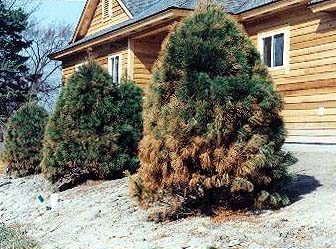RENEGADE GARDENER™
The lone voice of horticultural reason
Best Strategies for Dealing with Brown Evergreens
 It was a bad year for winter-burn, no question about it. Even established trees and shrubs that one could only assume were well past risk have suddenly entered April in the north showing brown-tipped needles, and in some cases, entire branches.
It was a bad year for winter-burn, no question about it. Even established trees and shrubs that one could only assume were well past risk have suddenly entered April in the north showing brown-tipped needles, and in some cases, entire branches.
Take heart. It may not be as bad as it looks. From the combined research and knowledge of horticulturists at the University of Minnesota, here is what to do if you fear portions of your evergreens have turned everbrown:
- Wait and See
Though needles and branches may have turned brown, the branches may not be dead (the needles unquestionably are). Don’t prune anything yet. The branches may bud and produce sub-branches with new needles that will get the tree or shrub looking decent by mid-summer. - Water
Start watering, though. The ground has thawed in Zone 4 and, I would assume, Zone 3, so if your soil will take water, go for it. You need to introduce moisture into the equation as soon as possible. Might I suggest that part of the problem lies in not watering evergreens sufficiently last fall? - Mist
Get moisture onto the evergreen, with a misting nozzle if you own one, or a plain old spray attachment if you don’t. Spray the whole plant every day, particularly during sunny days. - Fertilize
Get some granular evergreen fertilizer into the ground around the plant right now. You want it there the moment the roots kick in.
You’ll learn what you need to learn by about the first of June. If the entire tree has turned brown (or orange), you will probably wind up giving it the Ultimate Prune, but until then, keep the faith. Evergreens have been around a lot longer than we have, and you may be thankfully surprised.
Don Engebretson
The Renegade Gardener